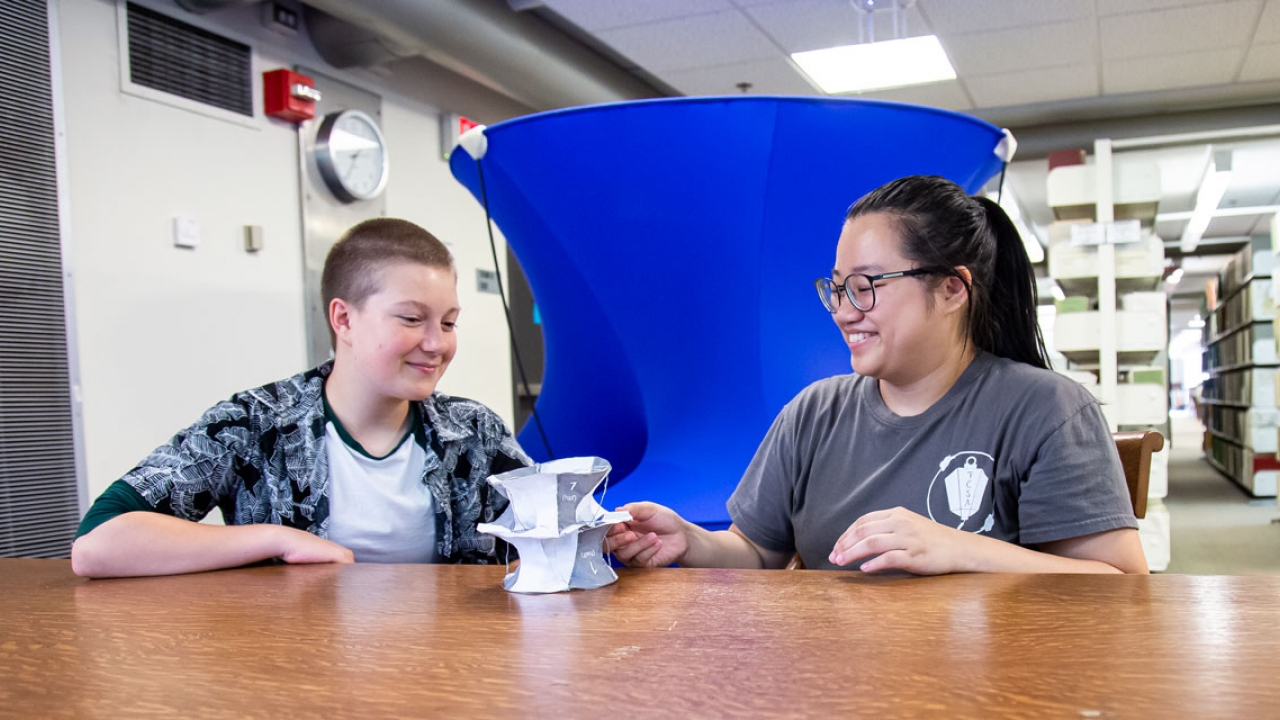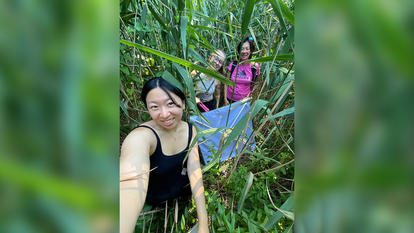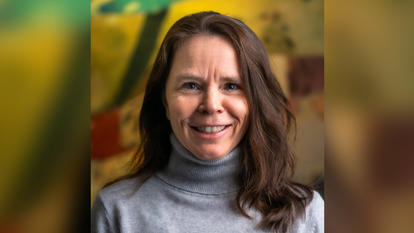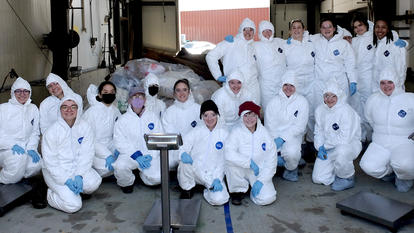Student-Made Model in Clapp Library Illustrates Mathematical Principle

Standing amid the stacks and study tables on the second floor of the Clapp Library is a 5-foot-tall, bright blue, not-really-cylindrical object that looks like an abstract sculpture. While it may look like art, it’s actually mathematics: a large-scale representation of the Costa-Hoffman-Meeks minimal surface, a concept in differential geometry.
It’s a complex concept that’s difficult to grasp without knowledge of advanced mathematics. The best way to imagine a minimal surface is to picture the film that appears when you dip a curved wire frame into a soapy solution. The liquid quickly forms the surface with the least possible area.
Jenna Ocheltree ’22 and Silvia Yu ’21, students of Megan Kerr ’89, professor of mathematics at Wellesley, who do grasp the math, undertook the project as part of the Science Center summer research program. Their goal was to simplify a complex principle by building a model that could be seen and touched, said Ocheltree. “We worked with Professor Kerr through the summer on this,” she said. “We all saw this as an intersection between math and art. It looks weird. It’s beautiful and kind of cool.”
They began by building a small prototype out of paper. For the larger model, which they worked on at the Weissman Foundry at Babson College, they cut and stitched together blue spandex, then stretched the material over a fiberglass frame. They also attached a plaque describing the model.
Minimal surfaces are an area of intense study in molecular engineering and materials science, said Kerr. Celso José da Costa, a Brazilian mathematician, discovered the Costa surface in 1982. Kerr explained that the Costa model was created by puncturing a doughnut-shaped object called a torus twice and unfolding it into an embedded (non-self intersecting) minimal surface of finite topology (unbounded).
Displaying the model in the library makes it available to students who might not otherwise come into contact with a representation of advanced mathematics. “It’s a very visual and unusual object,” said Kerr. “By placing it in this well-trafficked area, people are bound to see it and ask, ‘What is it?’ If their curiosity is piqued, they might ask questions. They might come over and read the plaque. They might become interested.” (And if they are, they can take their questions directly to the mathematics department, which has been relocated to the library during construction at the Science Center.)
Yu, a math and chemistry major, said working on the project increased her understanding of minimal surfaces. “I was not very familiar until this project,” she said. “Professor Kerr showed it to us and suggested it as a project over the summer. We learned more as we went along. Minimal surfaces are very hard to grasp, but this makes it more tangible and less abstract. We’re very happy with how it turned out.”
Photo: Jenna Ocheltree ’22 (left) looks on as Silvia Yu ’21 (right) shows a miniature paper prototype of their model. Behind them is the full-sized blue model, now on display in the Clapp Library.



